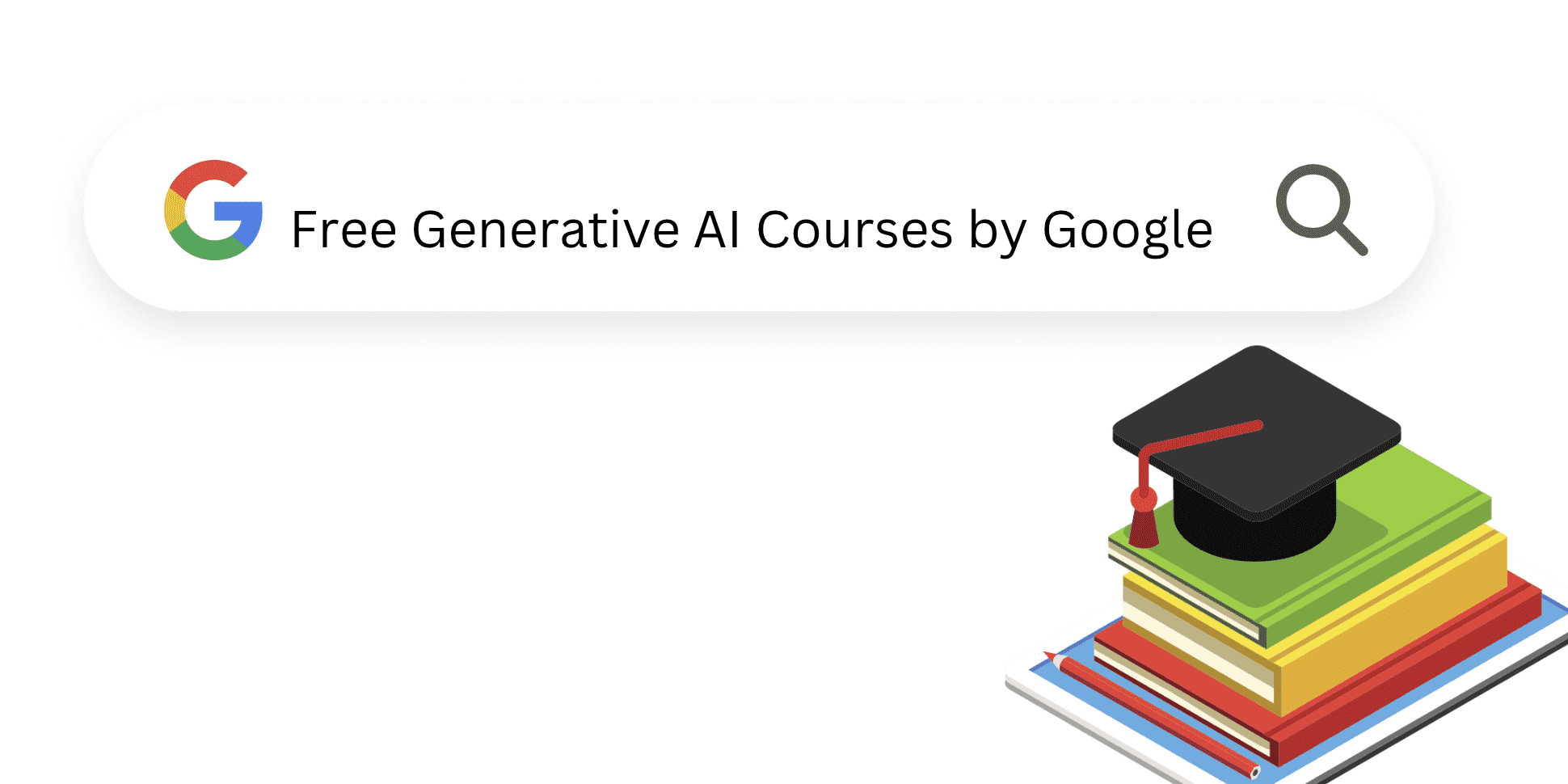Free Generative AI Courses by Google
With Generative AI being a hot topic, learn more about these courses provided that can give you a kick start into the wave.

Image by Author
Before we get into the free courses, let me quickly provide you with a simple definition of Generative AI. Generative AI can generate text, images, or other forms of media based on user prompts. It can produce new content, replace repetitive tasks, work on customized data, and more. For example, PandasAI was released not long ago - a generative AI python library which integrates generative AI capabilities into Pandas for simpler data analysis.
Just like PandasAI, we expect to see more Generative AI tools and software be released and integrated into our everyday lives to make processes simpler and smoother.
Let’s now talk about the FREE courses about Generative AI that are being provided by Google.
Google’s Generative AI Learning Path
Google created the Generative AI learning path, which consists of a collection of courses surrounding Generative AI products and technologies. You will learn about the fundamentals of Large Language Models (LLMs) as well as being able to create and deploy Generative AI solutions on Google Cloud.
The learning path includes the following 10 courses:
1. Introduction to Generative AI
Link: Introduction to Generative AI
This course will provide you with an overview of the fundamentals of Generative AI. If you’re completely new to Generative AI, this will be the best place to start. You will also learn how Generative AI differentiates from other machine learning methods.
2. Introduction to Large Language Models
Link: Introduction to Large Language Models
With the rise of chatbots such as ChatGPT and Bard, learning about what large language models (LLMs) are, how they are built, their use and prompt tuning is vital information.
3. Introduction to Responsible AI
Link: Introduction to Responsible AI
There have been some recent outrages about how responsible AI is. This course will go through how responsible AI is implemented into Google’s products. You will learn about Google's 7 AI Principles, learning more about social responsibility, accountability and privacy design principles.
4. Generative AI Fundamentals
Link: Generative AI Fundamentals
Once you have completed the first 3 courses, you will then be quizzed on all 3 in the 4th course. Some of you may already have background knowledge and get through this in no time. However, it is good for beginners and people who want to fill in the missing blanks.
5. Introduction to Image Generation
Link: Introduction to Image Generation
A big part of Generative AI is being able to generate images using stable diffusion. In this course, you will learn more about diffusion models, as well as dive into machine learning, deep learning, and convolutional neural nets.
6. Encoder-Decoder Architecture
Link: Encoder-Decoder Architecture
Learn more about the powerful machine learning architecture for sequence-to-sequence tasks - the encoder-decoder architecture. With this, you will be able to understand more about machine translation, text summarization, and question-answering.
This course also includes a lab walkthrough in which you will code a simple implementation of the encoder-decoder architecture for a specific task.
7. Attention Mechanism
Link: Attention Mechanism
I have heard a lot of people talking about wanting to learn more about this topic. The attention mechanism is a technique that allows neural networks to focus on specific parts of an input sequence. To be successful in the course, you will need a good understanding of machine learning, deep learning, natural language processing, and/or Python programming.
8. Transformer Models and BERT Model
Link: Transformer Models and BERT Model
As the terminology gets difficult, at this point you know you will need to be a bit more experienced. In the course you will learn about the main components of transformer models and Bidirectional Encoder Representations from Transformers (BERT).
For example, you will be able to learn more about the self-attention mechanism, and how it is used to build the BERT model, as well as learn about other tasks such as text classification.
9. Create Image Captioning Models
Link: Create Image Captioning Models
It says it in the name. Learn how to create an image captioning model by using deep learning, by breaking down the different components of an image captioning model, such as the encoder and decoder. You will then move onto training and evaluating the model, and will have created your own image captioning models that can generate captions for images.
10. Introduction to Generative AI Studio
Link: Introduction to Generative AI Studio
Last but not least, is the Generative AI Studio. In this course, you will be introduced to walk-through demos of the Generative AI Studio which is used to help prototype and customize generative AI models, so you can use their capabilities in your applications. There is also a hands-on lab at the end and a quiz to test your knowledge.
Wrapping it up
This 10 course learning pathway provided by Google does not only cater to beginners, but also machine learning engineers and data scientists who are looking at a shift in their career or learning new things. It’s better to be up to date than fall behind, and Google offers great resources to help students, employees, and newbies to get there.
Nisha Arya is a Data Scientist, Freelance Technical Writer and Community Manager at KDnuggets. She is particularly interested in providing Data Science career advice or tutorials and theory based knowledge around Data Science. She also wishes to explore the different ways Artificial Intelligence is/can benefit the longevity of human life. A keen learner, seeking to broaden her tech knowledge and writing skills, whilst helping guide others.
